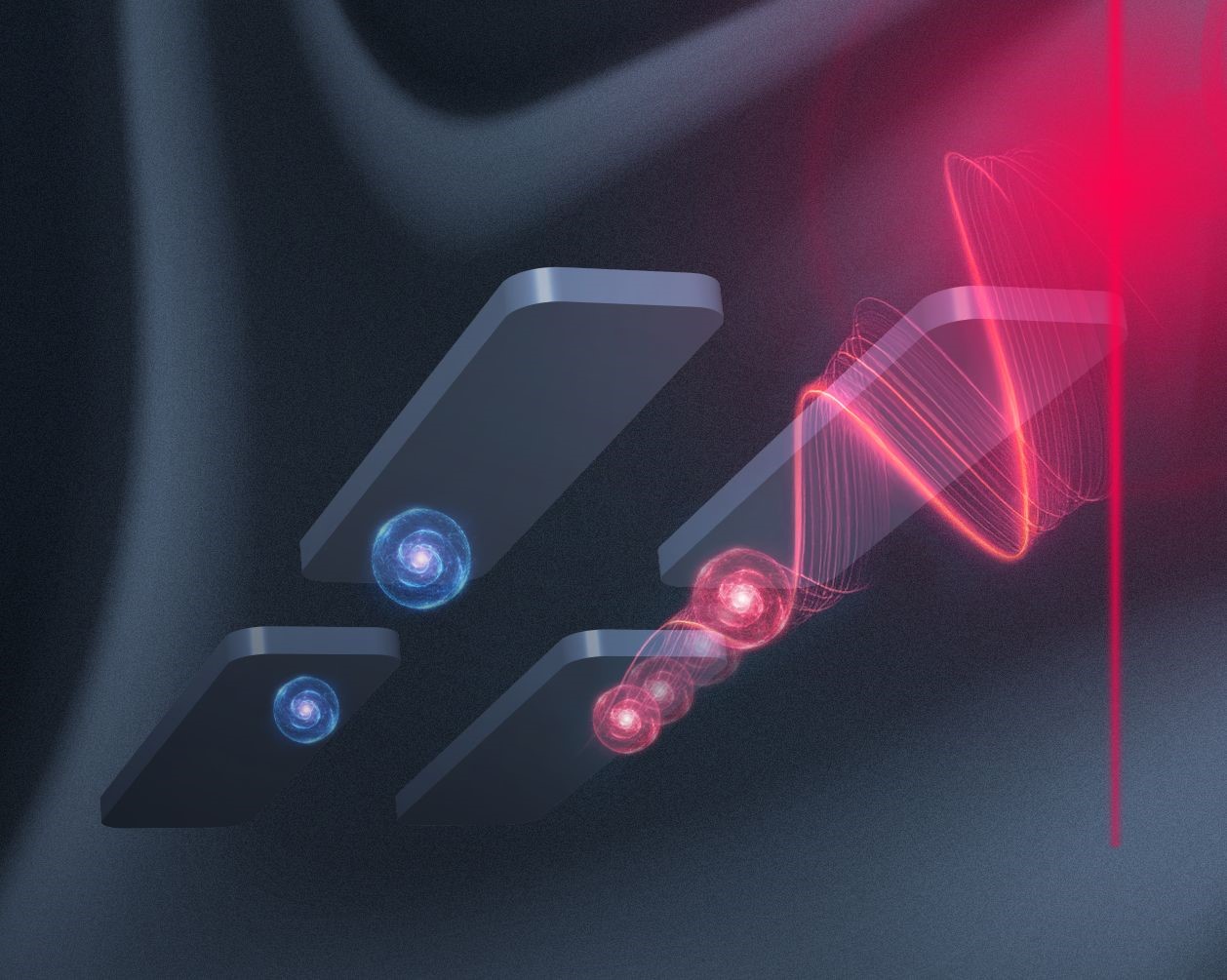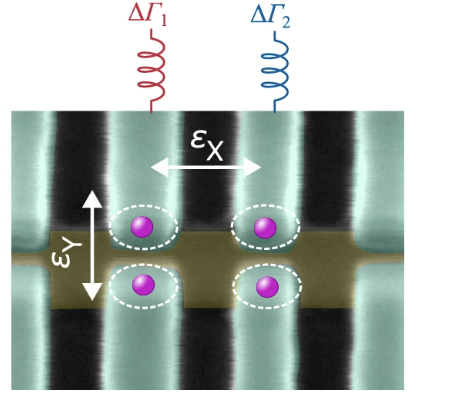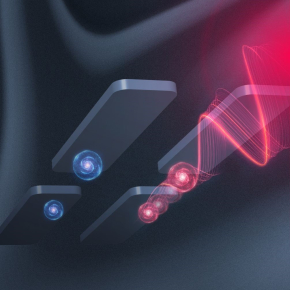Building qubit networks, one step closer to quantum computing
For the first time, researchers have succeeded in combining and controlling four qubits on a single chip in the form of trapped electrons whose spins are effectively protected and read synchronously.
References :
Combining multiplexed gate-based readout and isolated CMOS quantum dot arrays, Pierre Hamonic, Martin Nurizzo, Jayshankar Nath, Matthieu C. Dartiailh, Victor Elhomsy, Mathis Fragnol, Biel Martinez, Pierre-Louis Julliard, Bruna Cardoso Paz, Mathilde Ouvrier-Buffet, Jean-Baptiste Filippini, Benoit Bertrand, Heimanu Niebojewski, Christopher Bäuerle, Maud Vinet, Franck Balestro, Tristan Meunier, Matias Urdampilleta, Nature Communications 16, 6323 – Published: 9 July 2025.
Doi : 10.1038/s41467-025-61556-w
Open access archives : arXiv
One day, perhaps, quantum computers will tackle problems that our current machines cannot solve. Among the serious candidates for achieving this are spin qubits in silicon: electrons trapped in a silicon transistor, whose magnetization carries quantum information. These electrons are confined in silicon “quantum dots,” nanometric structures similar to transistors, manufactured using microelectronics production tools. However, two major problems remain: when attempting to assemble a large number of these boxes, the electrons have too many different ways of occupying them, and the sensors used to read the state of each electron are still too large and too slow.
The present study was carried out in the following CNRS laboratory :
Institut Néel (NEEL, CNRS)
In a recent study, researchers from the CNRS, the CEA, and the startup Quobly developed a new strategy for manipulating spin qubits. First, they isolated the quantum dot network from the outside world. This made it less likely for electrons to escape the system, making them easier to control. Next, using the reflection of a microwave signal on the boxes, they developed a measurement technique that detects electron movements by observing very small phase changes in the signal, without the need for bulky sensors. Finally, thanks to multiplexing, several measurement circuits can be combined on a single chip, allowing the entire network to be probed at the same time. Using this innovative strategy, they succeeded in controlling a network of four quantum dots, each containing exactly one electron, from which information can be extracted in a single measurement.

This method could pave the way for the manufacture of larger qubit networks, which would form a credible basis for future quantum computers, as they remain compatible with industrial microelectronics processes. These results are published in the journal Nature Communications.

